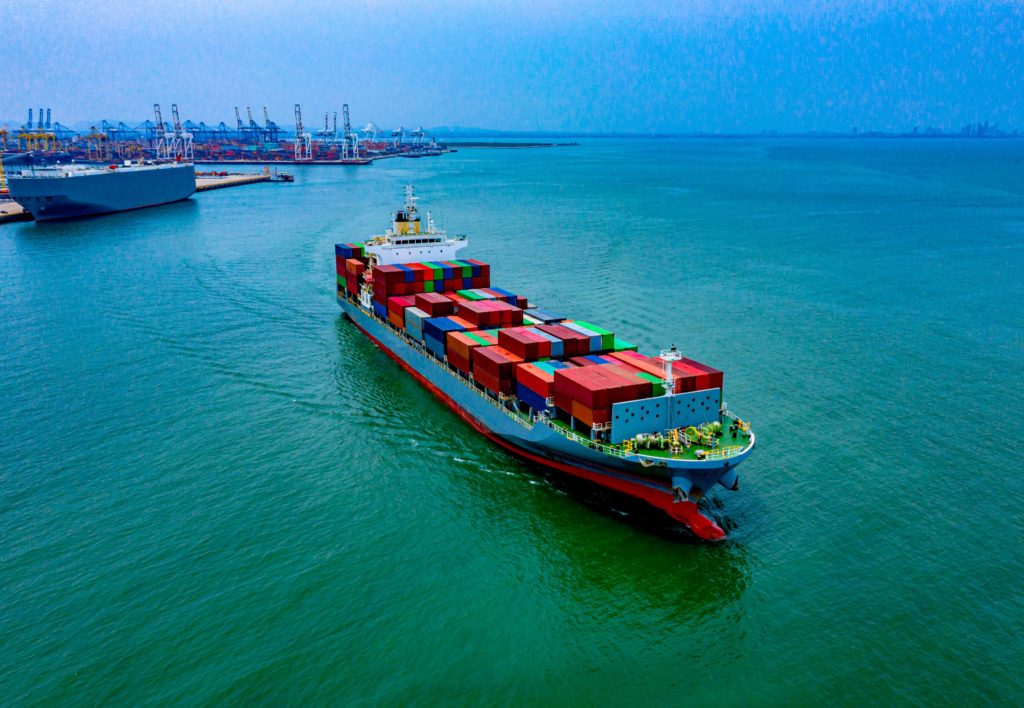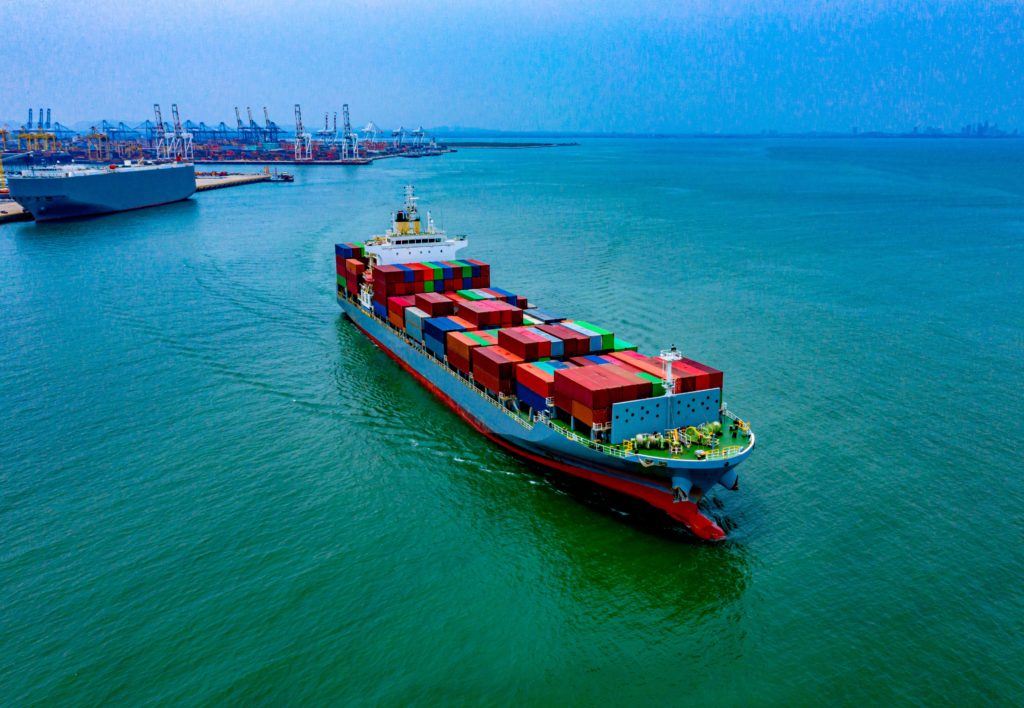Intentional Adulteration Rule
Intentional Adulteration Rule
Protect Food Against Intentional Adulteration
The Food Safety Modernization Act (FSMA) final rule “Mitigation Strategies to Protect Food Against Intentional Adulteration (IA rule)” is aimed at preventing intentional adulteration from acts intended to cause wide-scale harm to public health, including acts of terrorism targeting the food supply. Such acts, while not likely to occur, could cause illness, death, economic disruption of the food supply absent mitigation strategies. The IA rule creates new requirements for the production of food by registered food facilities to protect the food supply against intentional adulteration. Rather than targeting specific foods or hazards, this rule requires mitigation (risk-reducing) strategies for processes in certain registered food facilities.
FDA’s New Food Safety Law
In-Depth Coverage: Importing Food Products
- What is FDA Food Safety Modernization Act (FSMA)?
- Prior Notice of Imported Foods
- FDA Food Facility Registration
- Risk-Based Preventive Controls for Human Food
- Risk-Based Preventive Control for Animal Food
- Protect Food against Intentional Adulteration
- What is Foreign Supplier Verification Program (FSVP)?
- What is FSMA Produce Safety Rule?
Who is covered?
With some exceptions, this rule applies to both domestic and foreign companies that are required to register with the FDA as food facilities that produce, store, or otherwise handle the products under the Federal Food, Drug, and Cosmetic (FD&C) Act.
This rule is designed to primarily cover large companies whose products reach many people, exempting smaller companies. There are 3,400 covered firms that operate 9,800 food facilities. It does not cover farms.
Each covered facility is required to prepare and implement a food defense plan. This written plan must identify vulnerabilities and actionable process steps, mitigation strategies, and procedures for food defense monitoring, corrective actions and verification. A reanalysis is required every three years or when certain criteria are met, including mitigation strategies that are determined to be improperly implemented.
While this is the first time that companies are required to create a food defense plan, the FDA has taken an approach similar to Hazard Analysis Critical Control Point (HACCP) system, an approach adopted by industry for the identification, evaluation and control of food safety hazards. The FSMA rules advance and strengthen those safeguards.
Food Defense Plan
Each covered facility is required to prepare and implement a food defense plan. This written plan must identify vulnerabilities and actionable process steps, mitigation strategies, and procedures for food defense monitoring, corrective actions and verification. A reanalysis is required every three years or when certain criteria are met, including mitigation strategies that are determined to be improperly implemented.
A food defense plan must include:
-
Information adequate to identify the facility (e.g., the name and, when necessary, location of the facility)
-
Vulnerability assessment to identify significant vulnerabilities and actionable process steps and associated explanations
-
Mitigation strategies and associated explanations
-
Food defense monitoring procedures
-
Food defense corrective action procedures
-
Food defense verification procedures
-
Appropriate signature(s)
The owner, operator, or agent in charge of the facility must sign and date the food defense plan upon initial completion of the plan and whenever there are any modifications made to the food defense plan.
In-Depth Coverage: Country of Origin
- Country of Origin of Imported Merchandise
- Customs Ruling: Country of Origin
- Country of Origin: Food Products
- Country of Origin: Chemical and Pharmaceutical Products
- Country of Origin & Country of Manufacture: CBP vs. FDA
- Country of Origin: Substantial Transformation or Country of Assembly Test
- Country of Origin and Free Trade Agreement
- Country of Origin and Section 301
Vulnerability Assessment:
A vulnerability assessment is an evaluation of each point, step, or procedure in your food operation to identify significant vulnerabilities and actionable process steps. For each point, step, or procedure in the facility’s process, these elements must be evaluated:
-
The severity and scale of the potential impact on public health. This would include such considerations as the volume of product, the number of servings, the number of exposures, how fast the food moves through the distribution system, potential agents of concern and the infectious/lethal dose of each; and the possible number of illnesses and deaths.
-
The degree of physical access to the product. Things to be considered would include the presence of such physical barriers as gates, railings, doors, lids, seals and shields.
-
The ability to successfully contaminate the product.
Mitigation Strategies:
These should be identified and implemented at each actionable process step to provide assurances that vulnerabilities will be minimized or prevented. The mitigation strategies must be tailored to the facility and its procedures.
-
The final rule removes the distinction between “broad” and “focused” mitigation strategies. The original proposal only required “focused” mitigation strategies because “broad” mitigation strategies, such as a fence around the entire facility, did not protect specific points from being attacked by an insider.
-
The final rule recognizes that a mitigation strategy, applied in a directed and appropriate way to protect the actionable process step from an insider attack, would sufficiently minimize the risk of intentional adulteration.
In-Depth Coverage: Marketing and Advertising Compliance
- Federal Trade Commission (FTC) Advertising Rules
- Made in USA Standard
- FTC Regulation on Environmental Claims
- Adverting and Marketing on the Internet
- Label Claims for Conventional Foods and Dietary Supplements
- Dietary Supplement Advertising: What is FTC's Truth-in-Advertising Law?
- USDA Country of Origin Labeling (COOL)
- FTC Rules & Regulations on Food Advertisement
Mitigation strategy management components: Steps must be taken to ensure the proper implementation of each mitigation strategy. In each of these areas of food defense, the facilities are given more flexibility in the final rule to establish the actions most appropriate to their operation and product.
-
Monitoring: For each mitigation strategy, you must establish and implement written procedures for monitoring as appropriate to the nature of the mitigation strategy and its role in the facility’s food defense system. Food defense monitoring is conducting a planned sequence of observations or measurements to assess whether mitigation strategies are operating as intended. You must monitor the mitigation strategies with adequate frequency to provide assurances that they are consistently performed. FDA does not specify any specific monitoring frequencies for mitigation strategies.
-
Corrective actions: For each mitigation strategy, you must establish and implement written procedures for corrective actions as appropriate to the nature of the actionable process step and the nature of the mitigation strategy. You must establish and implement written food defense corrective action procedures that must be taken if the mitigation strategies are not properly implemented. Food defense corrective action procedures must describe the steps to be taken to ensure that:
-
Appropriate action is taken to identify and correct a problem that has occurred with the implementation of a mitigation strategy; and
-
Appropriate action is taken, when necessary, to reduce the likelihood that the problem will reoccur.
-
Verification: Food defense verification is the application of methods, procedures, and other evaluations, in addition to food defense monitoring, to determine whether a mitigation strategy or combination of mitigation strategies is or has been operating as intended according to the food defense plan. For each mitigation strategy, you must establish and implement procedures for food defense verification. Food defense verification activities must include, as appropriate to the nature of the mitigation strategy and its role in the facility’s food defense system.
Training and recordkeeping: Facilities must ensure that personnel assigned to the vulnerable areas receive appropriate training; facilities must maintain records for food defense monitoring, corrective actions, and verification activities.
In-Depth Coverage: USDA-Regulated Products
- Importing USDA-Regulated Food Products
- Import Regulation by USDA Agricultural Marketing Service (AMS)
- Food Products – FDA or USDA Regulated
- Country of Origin Labeling
- Importing Animals, Animal Products, and Biologics into the US
- Importing Meat, Poultry, and Egg Products into the US
- Labeling and Marking of Imported Meat, Poultry, and Egg Products
- USDA National Organic Program (NOP)
- Agricultural Safeguards and USDA Licensing
Compliance Date
This rule is a first of its kind, so education and outreach are critical. Additionally, FDA recognizes that many of the food facilities covered by this rule will also be meeting the requirements of other FSMA rules. Therefore, FDA is providing a longer timeline in the final rule for facilities to comply with the intentional adulteration rule.
-
Very Small Businesses—a business (including any subsidiaries and affiliates) averaging less than $10,000,000, adjusted for inflation, per year, during the three-year period preceding the applicable calendar year in sales of human food plus the market value of human food manufactured, processed, packed, or held without sale (e.g., held for a fee). These businesses would have to comply with modified requirements within five years after the publication of the final rule.
Compliance date: July 26, 2021
-
Small Businesses—a business employing fewer than 500 persons would have to comply four years after the publication of the final rule.
Compliance date: July 27, 2020
-
Other Businesses—a business that is not small or very small and does not qualify for exemptions would have to comply three years after the publication of the final rule.
Compliance date: July 26, 201
Exemptions
-
A very small business. While exempt, the business would be required to provide to FDA, upon request, documentation to demonstrate that the business is very small.
-
The holding of food, except the holding of food in liquid storage tanks
-
The packing, re-packing, labeling or re-labeling of food where the container that directly contacts the food remains intact
-
Activities that fall within the definition of “farm”
-
Manufacturing, processing, packing, or holding of food for animals
-
Alcoholic beverages under certain conditions
-
On-farm manufacturing, processing, packing, or holding by a small or very small business of certain foods identified as having low-risk production practices. The exemption applies if such activities are the only activities conducted by the business subject to the rule. These foods include certain types of eggs and certain types of game meats.
Quick Link To U.S. Customs & Import Requirements
FDA-Regulated Products and Import Requirements
- What is Food Safety Modernization Act (FSMA)?
- Prior Notice of Imported Foods
- Food Facility Registration
- Risk-Based Preventive Controls for Human Food
- Risk-Based Preventive Control for Animal Food
- Standards for the Growing, Harvesting, Packing, and Holding of Produce for Human Consumption
- What is Foreign Supplier Verification Program (FSVP)?
- Protect Food against Intentional Adulteration
- FDA Regulated Product in Foreign Trade Zone (FTZ)
- Entry Review Process for FDA Regulated Products
- Country of Origin VS Country of Manufacture
- Foods Regulated by FDA or USDA: What is the Difference?
- Label and Labeling Claims for Conventional Food and Dietary Supplements
- What is USDA Country of Origin Labeling (COOL)?
- Import for Export of FDA Regulated Products
- FDA Regulated Products in Personal Baggage or Sending by Mail or Courier
- International Mail Facility (IMF) and FDA Regulation
- Importing Biological Product Regulated by CBER
- Importing Cosmetics and Voluntary Cosmetic Registration Program (VCRP)
- Importing Drugs into the U.S.
- Importing OTC Drugs into the U.S.
- Importing Veterinary Drugs into the U.S.
- Importing Tobacco Products into the U.S.
- Importing Medical Devices into the U.S
- Importing Food Products into he U.S.
- Importing Radiation-Emitting Products into the U.S.
Customs Clearance and Import Requirements
- Entry of Imported Merchandise
- What is Section 321 Entry?
- What is Automated Commercial Environment (ACE)
- What is an Automated Broker Interface (ABI)?
- Who is Ultimate Consignee?
- What is Non-Resident Importer Program?
- Country of Origin of Imported Merchandise
- What is the Country of Assembly?
- What if the FDA's Country of Manufacture?
- Marking of Country of Origin on U.S. Imports
- What is Customs Bond?
- Reconciliation Prototype and Bond Rider
- Who Needs a Customs Broker?
- What is Customs Ruling Program?
- Classification of Imported Goods
- How is imported merchandise appraised?
- What are Import Quotas?
- What are Trade Remedy Duties?
- Antidumping Duty (AD) and Countervailing Duty (CVD)
- What is Foreign Trade Zone (FTZ)?
- What is Importer Security Filing (ISF)?
- What is Temporary Importation under Bond (TIB)
- What is In-Bond Process?
Guidance on customs & logistics solution for traditional and e-commerce importers and exporters
Importer Security Filing (ISF)
An ISF is required when cargo (ocean only) laden on vessel at a foreign port is destined for shipment to the U.S. Under ISF rule, some importing information and details regarding cargo must be transmitted to the CBP at least 24 hours before goods are loaded onto the vessel.
Customs Clearance
All goods imported into the U.S. are required to be declared to CBP. Our customs broker will help you stay in compliance with customs laws and regulations and clear your goods quickly and efficiently with our electronic Automated Commercial Environment (ACE) and Automated Broker Interface (ABI) Single Window System.
Freight Forwarding
Looking for a freight forwarding partner? To move your cargo from its current location through customs to its final destination we will partner with you to find the best way for your business. Whatever your transportation, logistics or customs clearance needs, we will do our best to customize a solution for your needs.
Warehousing & Distribution
Our warehouse facility offers great potential for serving as a regional hub with over 145,000 SF storage capacity close to Los Angeles Airport & Los Angeles/Long Beach Sea port. With our extensive experience in freight services, your import/export cargo will be handled quickly and effectively.
Section 321 Entry
Section 321 entry allows importing free of duty and tax for shipments imported by one person on one day having a fair retail value in the country of shipment not more than $800. We provide our resident and non-resident clients with dedicated ACE eManifest solutions for Section 321 entry of all modes of transportation.
Non-resident Importer Program
If you want to sell your products in U.S. marketplaces, but you are a business owner located outside of the U.S. and do not have an entity or presence in the U.S., you need to be established as a Foreign Importer of Record before your products can be imported into the U.S. We can help you.
E-Commerce
The Internet has made it easy to find and purchase items from almost anywhere in the world. Our e-commerce experts will help you find the right solution for your international transportation, customs clearance, and delivery to your final destination. We also provide value-added repackaging, warehousing and distribution services.

















